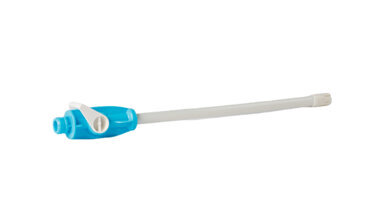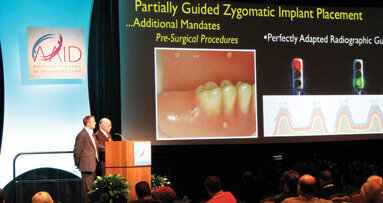Problem employees. Their performance is unsatisfactory. They consume your time and create dissatisfaction for you and their coworkers. They show little commitment to the job and often appear bored. Employee entitlements interest them more than the team goals. Counseling sessions always end in the same manner; they agree to change but have little follow through.
Some problem employees can be helped through coaching or training to correct performance shortfalls. Others can do the job, but for one reason or another, they need constant supervision and reinforcement to perform at an acceptable level. Whatever the situation might be, the key to handling employees with behavior problems is strong and effective communication skills.
Make sure that the work expectations and performance objectives are clear. The only way to verify the existence of a performance problem is to state the expected level of performance and measure the employee’s actual performance against it.
1) Review all the details before you have a meeting with the employee. Evaluate all your previous records, including job descriptions, notes and documented conversations that relate to the specific behavior. Don’t try to wing it!
2) Give the person advance notice and specify the issue or concern. For example, for a person who is consistently late for work, you might say to them: “I’d like to speak with you tomorrow regarding your starting time.”
3) At the time of the discussion, start the conversation off in an upbeat manner. Doing so will set the tone for a productive meeting. You can express your concerns in a friendly manner without being overbearing.
4) Describe the problematic behavior and its impact on you and the staff. For example, “You’ve been coming to work a half-hour late several days a week for the past month. This is making it difficult for your coworkers to get their work done. And I’m very concerned it’s starting to set a bad example for everyone else.”
5) Refer to the history and reoccurrence of the problem. “This is not the first time we’ve had to talk about this. According to my records, we discussed this issue six weeks ago, and once more prior to that in March, and yet the problem continues.”
6) State the actual effect that the employee’s behavior has on you and the staff. For example, “I recognize that you make up the missed time by either staying late or working through lunch, but that’s not a solution. Because we operate as a team, having one person unavailable can create major disruption in the practice.”
7) Listen actively to the employee’s response. Don’t get distracted with thinking about what you’ll say next. Be open to what the employee says.
8) Make a suggestion or a request to change the behavior. For example, “What I’d suggest is that you rearrange things at home so you can be punctual.” Then check to make sure that the person understands your suggestion. For example, “Do you understand why I’m insisting that you be on time?”
9) Make sure that the employee is committed to the change. For example, “So you agree that you’ll be here at 9 a.m. every morning.” Keep a record of what was said and any agreements that were made. Have the employee sign the agreement and pick a future date to revisit the discussion and any improvements that may or may not have taken place.
At some point in your career, you will have to dismiss an employee. To do it right and in a professional manner, make sure that you’ve done your homework with respect to legal issues and have written documentation of the employee’s performance or behavior and the steps you’ve taken to help. You want to feel confident that dismissing the person is the right thing to do — for him or her, for your team and for your practice.
Editorial Note: This article appeared in Ortho Tribune U.S. Edition, Vol. 7, No. 5, PCSO/OrthoVoice 2012 issue.
Whether an associate dentist is considered an employee or independent contractor could have certain tax and non-tax consequences for the owner of a dental ...
A 45-year-old female patient presented with a root-filled premolar that had a composite MOD restoration present, and the unprotected buccal cusp had ...
For a practicing dentist who aims to always deliver high-quality patient care, staff retention is an important value. Staff retention aids the dental ...
It’s an interesting paradox of these economic times. Although the unemployment rate nationwide remains high and it would seem that the job market ...
The day-to-day pressure in running a dental practice is enormous, especially in today’s economy. Unfortunately, dentists spend most of their day ...
CHESTERFIELD, Mo., USA: In response to the Covid-19 pandemic, through June 31, DOVE Dental Products will provide 25 SE Plus Single-use Disposable Saliva ...
BOSTON: The American Academy of Implant Dentistry’s annual meeting, held Oct. 20-23, offered thought-provoking educational sessions and the Implant ...
TULSA, Okla., USA: Each year, Youth Services of Tulsa (YST) awards an organization or individual donor who has gone above and beyond to support youth in ...
When you decided to be a dentist, you probably never expected to be in a position to save lives. But the fact of the matter is that all dental professionals...
KOBLACH, Austria: The key to a perfect restoration result is flawless model management. Amann Girrbach offers specifically developed and perfectly ...
Live webinar
Wed. 14 January 2026
12:00 PM EST (New York)
Dr. Théo Laplane, Dr. Robert Gottlander DDS
Live webinar
Fri. 16 January 2026
12:00 PM EST (New York)
Live webinar
Mon. 19 January 2026
1:00 PM EST (New York)
Philipp Kopp, Michael Seeber
Live webinar
Thu. 22 January 2026
9:00 AM EST (New York)
Prof. Judith Jones D.D.S; M.P.H., Prof. Kakuhiro Fukai D.D.S., Ph.D, Dr. Bathsheba (Bethy) Turton
Live webinar
Thu. 22 January 2026
2:00 PM EST (New York)
Dr. Nicola M. Grande DDS, PhD
Live webinar
Wed. 28 January 2026
8:00 AM EST (New York)
Live webinar
Wed. 28 January 2026
11:00 AM EST (New York)
Prof. Dr. Jan-Frederik Güth



 Austria / Österreich
Austria / Österreich
 Bosnia and Herzegovina / Босна и Херцеговина
Bosnia and Herzegovina / Босна и Херцеговина
 Bulgaria / България
Bulgaria / България
 Croatia / Hrvatska
Croatia / Hrvatska
 Czech Republic & Slovakia / Česká republika & Slovensko
Czech Republic & Slovakia / Česká republika & Slovensko
 France / France
France / France
 Germany / Deutschland
Germany / Deutschland
 Greece / ΕΛΛΑΔΑ
Greece / ΕΛΛΑΔΑ
 Hungary / Hungary
Hungary / Hungary
 Italy / Italia
Italy / Italia
 Netherlands / Nederland
Netherlands / Nederland
 Nordic / Nordic
Nordic / Nordic
 Poland / Polska
Poland / Polska
 Portugal / Portugal
Portugal / Portugal
 Romania & Moldova / România & Moldova
Romania & Moldova / România & Moldova
 Slovenia / Slovenija
Slovenia / Slovenija
 Serbia & Montenegro / Србија и Црна Гора
Serbia & Montenegro / Србија и Црна Гора
 Spain / España
Spain / España
 Switzerland / Schweiz
Switzerland / Schweiz
 Turkey / Türkiye
Turkey / Türkiye
 UK & Ireland / UK & Ireland
UK & Ireland / UK & Ireland
 International / International
International / International
 Brazil / Brasil
Brazil / Brasil
 Canada / Canada
Canada / Canada
 Latin America / Latinoamérica
Latin America / Latinoamérica
 China / 中国
China / 中国
 India / भारत गणराज्य
India / भारत गणराज्य
 Pakistan / Pākistān
Pakistan / Pākistān
 Vietnam / Việt Nam
Vietnam / Việt Nam
 ASEAN / ASEAN
ASEAN / ASEAN
 Israel / מְדִינַת יִשְׂרָאֵל
Israel / מְדִינַת יִשְׂרָאֵל
 Algeria, Morocco & Tunisia / الجزائر والمغرب وتونس
Algeria, Morocco & Tunisia / الجزائر والمغرب وتونس
 Middle East / Middle East
Middle East / Middle East





























































To post a reply please login or register